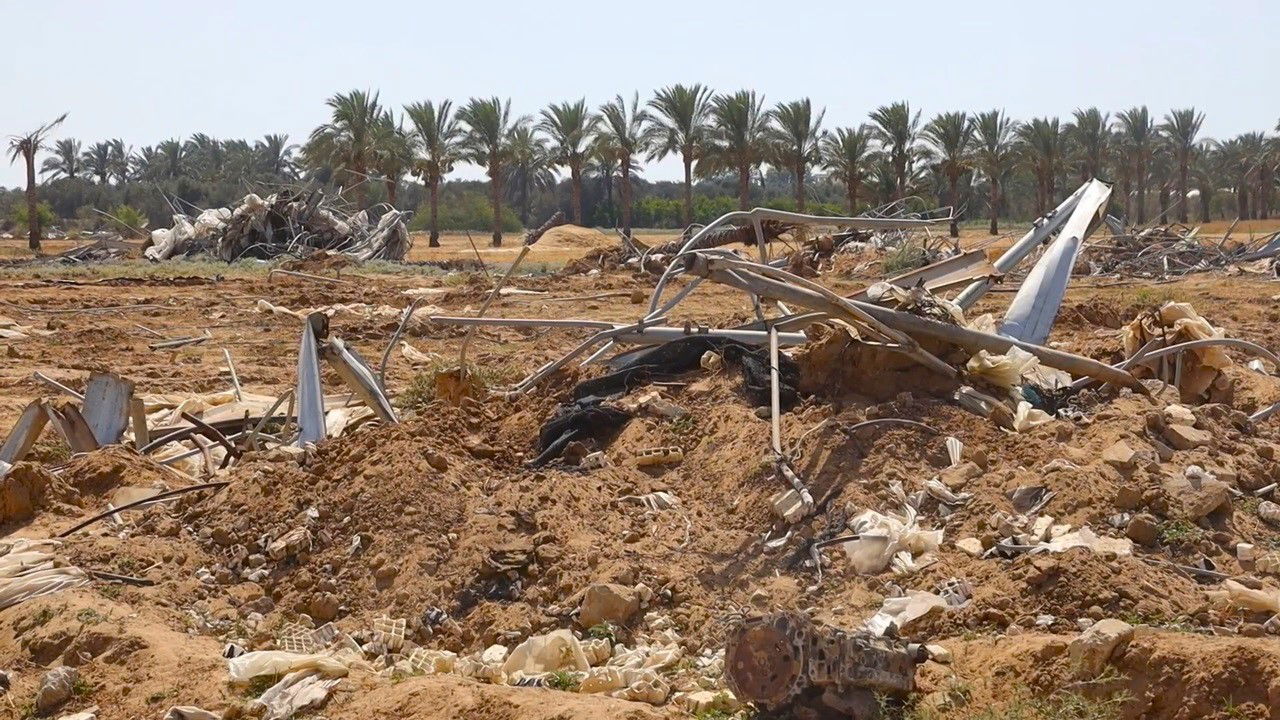
The Food and Agriculture Organization (FAO) and the United Nations Satellite Centre (UNOSAT) have conducted a satellite-based assessment revealing significant damage to Gaza's agricultural land and infrastructure, further exacerbating the region's humanitarian and hunger crises. As of 1 September 2024, 67.6% of Gaza's cropland, equating to 10,183 hectares, has been affected. This represents a significant increase from 57.3% in May and 42.6% in February of the same year. The damage affects orchards, field crops, and vegetable farms, with orchards being the most severely impacted at 71.2%.
Khan Younis has the largest area of damaged cropland (2,589 hectares), while North Gaza faces the highest proportion of damage per governorate, at 78.2%. Along with farmland, the Port of Gaza City has seen severe damage, with most fishing boats destroyed. The satellite data also highlight significant damage to agricultural infrastructure, including 1,188 wells (52.5% of total wells) and 577.9 hectares of greenhouses (44.3%). Additionally, 95% of cattle have died, while only 1% of poultry remain alive, marking a near-total collapse of commercial poultry production.
The findings highlight the devastating impact of the ongoing conflict on Gaza's agricultural sector. Heavy vehicle tracks, shelling, and other conflict-related activities have further destroyed critical infrastructure. FAO Deputy Director-General Beth Bechdol emphasized the dire consequences of this destruction, warning that food production in Gaza is now in jeopardy, with food aid alone insufficient to meet the population’s daily needs. "The damage to agricultural land raises serious concerns about the potential for future food production, compounding the risk of famine," she stated.
Nikhil Seth, Executive Director of UNITAR, underlined the importance of satellite analyses in informing humanitarian responses, noting the unprecedented levels of agricultural damage in the Gaza Strip. The conflict has cut off access to essential protein sources and nutritious foods, severely impacting livelihoods. Farmers, fishers, and herders in Gaza continue to risk their lives to sustain food production, but their efforts are increasingly hampered by the extensive damage to infrastructure.
FAO stressed that agricultural aid is urgently needed to prevent the complete collapse of the sector and to address the worsening hunger and malnutrition crisis, especially among children. With over 2 million Gazans in urgent need of food and livelihood assistance, the situation remains critical.
















